Makes and Models
Hot Hatch Heaven
Behind the thriving popularity of buying SUVs, there is a lesser but feistier group of people who love buying and driving a Hot Hatch. They are a loyal group of drivers who love the raw speed and excitement that a Hot Hatch drive provides – along with a bit of practicality on the side mind you. The mind-set of a Hot Hatcher is that ‘if my need is to own a hatchback, then let me get a hot one’.
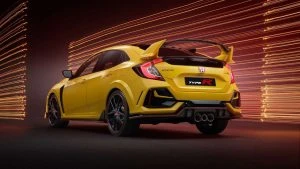
Honda Civic Type R
In Australia one of the most popular Hot Hatch cars of recent times has been the super little Honda Civic Type R. It has even been given a Performance Car of the Year award, while also making a great argument for itself as being one of the best ‘Bang For Your Bucks’ experiences you can buy on four wheels. With 228 kW and 400 Nm the latest Type R Civic is very quick and makes short work of most of its rivals. It constantly feels quicker than anything, except maybe an AMG or Audi RS equivalent, on a backroad or windy race track. Boot space is also 420 litres, which is more than enough for most people’s shopping trip.
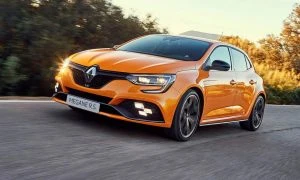
Renault Megane RS
Renault has sold plenty of new RS Megane Hot Hatchbacks, and at times more than the Type R. The Renault Megane RS offers a range that includes the availability of both manual and automatic transmissions, along with two chassis options. Good on road comfort, the power from the 205 kW/390 Nm 1.8-litre turbo four is strong, and with launch control it keeps running quick naught-to-naughty times. Brembo brakes work marvellously to haul in crazy speeds, and the four-wheel steering has immense grip and control. With all this performance you still get great practicality.
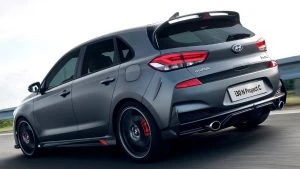
Hyundai i30N
More popular among Australian Hot Hatch buyers has been the potent and very well sorted Hyundai i30N. You’ve got to love the i30N’s fun factor bolstered by the banging and popping exhaust notes!
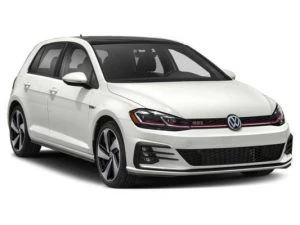
Volkswagen Golf GTi
But, arguably, the most preferred Hot Hatch to buy, at least in Australia, has been the immensely satisfying VW Golf GTi. The thing is just so quick, it’s engaging and easy to drive, and it also has a real luxurious feel to the quality interior. For those that can afford it, the VW GTi still delivers a comprehensive package.
I could add that Peugeot has a GTi Hot Hatch, so too Ford in the form of its Focus ST and Subaru in its WRX, and the….. But you might like to add your few cents to the conversation or even disagree with my overall jurisdiction on the matter.
However, if you are thinking about owning a new performance hot hatch in 2020, then the afore mentioned ones are a few of the best you can buy that are cheaper than a real quick Mercedes Benz A45 AMG, or Audi RS3.
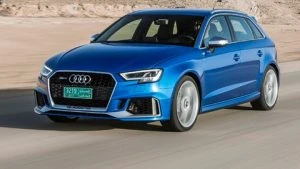
Audi RS3
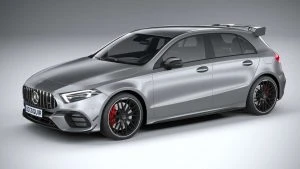
Mercedes Benz A45 AMG
An Abundance Of Energy: H2X Australia
Australia’s car manufacturing industry is dead. Long live the Australian car manufacturing industry.
But all is not yet lost…Hydrogen is seen as the potential next step in powering automobiles on Earth, and the technology has been around for decades, featuring strongly in the aerospace industries. Australian company H2X, based in Sydney, has been quietly working away since 2015 on using the most abundant element known, hydrogen, as the source material for automotive propulsion. The heart of a hydrogen powered vehicle is the fuel cell. Take hydrogen and oxygen, wave the magic wand, and electricity is made. The resulting leftover is water. Simple H2O. The efficiency of this process varies and comes in between 40 to 60 percent. Waste heat can be reused and brings efficiency to over 80%.
The heart of a hydrogen powered vehicle is the fuel cell. Take hydrogen and oxygen, wave the magic wand, and electricity is made. The resulting leftover is water. Simple H2O. The efficiency of this process varies and comes in between 40 to 60 percent. Waste heat can be reused and brings efficiency to over 80%.
H2X are applying hydrogen fuel tech to vehicles that they hope to have up and running by the mid 2020s. A minivan, a tractor, and an SUV are amongst the range that the company has in mind. The firm recently turned the dirt at a location at Port Kembla, south of Sydney. It’s here that they currently intend to build the vehicles and also invest in battery and super-capacitors. However, in a reasonable effort to minimise extravagant start up costs, the firm will first use pre-assembled parts readily available from Asia, and a fuel cell from a company called ElringKlinger. A common issue with starting a new company is sourcing people with the required expertise. Here, H2X don’t appear to have a problem. Their CEO is a person that comes from hydrogen related businesses plus a solid automotive background with BMW, Audi, and Volkswagen. Heading the design bureau is the designer of the Giulietta, Chris Reitz. He’s also worked with VW and Nissan. Saab and GM have their DNA running in the veins of Peter Zienau as he worked on hybrid and electric programs with the pair. Opel, Lotus, Volvo, Aston Martin and Tesla have given Peter Thompson over thirty years of experience, including his involvement in the Tesla Roadster.
A common issue with starting a new company is sourcing people with the required expertise. Here, H2X don’t appear to have a problem. Their CEO is a person that comes from hydrogen related businesses plus a solid automotive background with BMW, Audi, and Volkswagen. Heading the design bureau is the designer of the Giulietta, Chris Reitz. He’s also worked with VW and Nissan. Saab and GM have their DNA running in the veins of Peter Zienau as he worked on hybrid and electric programs with the pair. Opel, Lotus, Volvo, Aston Martin and Tesla have given Peter Thompson over thirty years of experience, including his involvement in the Tesla Roadster. There’s more power to come in the board, with Alan Marder, also with plenty of experience in startups dealing with hydrogen fuel cell and automotive industries spanning 35 years. He’ll head the marketing and strategy section, while the former head of the VW Group Asia, Kevin McCann, who also works with Hyundai, Volvo, and Deloitte, will be on the supervisory board.
There’s more power to come in the board, with Alan Marder, also with plenty of experience in startups dealing with hydrogen fuel cell and automotive industries spanning 35 years. He’ll head the marketing and strategy section, while the former head of the VW Group Asia, Kevin McCann, who also works with Hyundai, Volvo, and Deloitte, will be on the supervisory board.
Picking Port Kembla, says H2X, was a given, as it’s a focus for industries H2X will need as supports. Rail, metal manufacturing in the forms of steel and aluminuim, the size of the port to allow cargo ships, and electronics makers at a military spec level will go a long way to assisting the rumoured workforce of 5,000. They’ve already put forward what they hope will be the first vehicle to drive off the production line. The “Snowy” SUV, with a mooted range of 650km, a refuel time of around three minutes, and a freeway speed reaching time of 6.9 seconds, will be backed by a bio-safe interior, smartphone apps, and autonomous emergency braking. The powertrain is said to be a combination of a 60kW Elring Klinger PEM fuel cell, a graphene ultracapacitor from Skeleton Tech, a powerful 200kW electric motor, and a 5.0kg-capacity hexagon Type 4 hydrogen tank. A key feature that’s under the radar is a suspension system that will, like braking regenerative energy, apply the same process from suspension travel. The Snowy is on track for a 2022 unveiling.
They’ve already put forward what they hope will be the first vehicle to drive off the production line. The “Snowy” SUV, with a mooted range of 650km, a refuel time of around three minutes, and a freeway speed reaching time of 6.9 seconds, will be backed by a bio-safe interior, smartphone apps, and autonomous emergency braking. The powertrain is said to be a combination of a 60kW Elring Klinger PEM fuel cell, a graphene ultracapacitor from Skeleton Tech, a powerful 200kW electric motor, and a 5.0kg-capacity hexagon Type 4 hydrogen tank. A key feature that’s under the radar is a suspension system that will, like braking regenerative energy, apply the same process from suspension travel. The Snowy is on track for a 2022 unveiling.
2020 Mitsubishi ASX GSR: Private Fleet Car Review
 This Car Review Is About: Mitsubishi’s ASX with a nameplate that in Mitsubishi’s history has referred to a sporting oriented vehicle. GSR was found on their hi-po Lancers and they were a little less mental than the Evo class cars. However, in ASX trim, the sporting intention has been relegated to a lairy colour on the review car and a front wheel driven chassis with the traction control dialed back a little.
This Car Review Is About: Mitsubishi’s ASX with a nameplate that in Mitsubishi’s history has referred to a sporting oriented vehicle. GSR was found on their hi-po Lancers and they were a little less mental than the Evo class cars. However, in ASX trim, the sporting intention has been relegated to a lairy colour on the review car and a front wheel driven chassis with the traction control dialed back a little.
How Much Does It Cost?: $30,740 is the recommended retail price. $32,490 is the drive-away price as of June 2020.
On The Outside It’s: Been given blacked out highlights to complement the Sunshine Orange paintwork. 18 inch alloys with black paint, along with the grille, door mirrors, and a subtle rear deck lid spoiler are part of the GSR’s visual appeal. It’s a combination that suits the “shield grille” treatment as it brings a more assertive look to the small SUV. The painted alloys have Bridgestone Ecopia rubber, and they’re 225/55 in profile. An identifying GSR badge is on the tailgate, and it’s the only one that says GSR.
 On The Inside It’s: The mostly cleanly laid out look newer Mitsubishis have. “Microsuede/Synthetic Leather Seat Trim with Red Stitching” is the description for the pews and they’re a delight. Comfortable, supportive, warm and there’s no need for electric heating. Air-conditioning is via the simple and classy dial system that Mitsubishi has employed to great effect. They sit above a pair of USB ports and a 12V socket, and below the 8.0 inch DAB equipped touchscreen.
On The Inside It’s: The mostly cleanly laid out look newer Mitsubishis have. “Microsuede/Synthetic Leather Seat Trim with Red Stitching” is the description for the pews and they’re a delight. Comfortable, supportive, warm and there’s no need for electric heating. Air-conditioning is via the simple and classy dial system that Mitsubishi has employed to great effect. They sit above a pair of USB ports and a 12V socket, and below the 8.0 inch DAB equipped touchscreen.
 The tailgate is manually operated, opening to a 393L cargo section that expands to 1,193L with the second row seats folded. A flat loading floor and low lip make loading up a brezze, and the pair of recesses either side help for items that need a little extra security.The angular slope of the ASX’s roof doesn’t compromise interior packaging either. 963mm head room is available for the rear seats, plus 921mm leg room. They’re good numbers considering 1,000mm head room for the front seats and 1,056mm leg room.
The tailgate is manually operated, opening to a 393L cargo section that expands to 1,193L with the second row seats folded. A flat loading floor and low lip make loading up a brezze, and the pair of recesses either side help for items that need a little extra security.The angular slope of the ASX’s roof doesn’t compromise interior packaging either. 963mm head room is available for the rear seats, plus 921mm leg room. They’re good numbers considering 1,000mm head room for the front seats and 1,056mm leg room. Under The Bonnet Is: A 2.4L petrol engine. No diesel, no hybrid. 123kW and 222Nm haul 1,390kg (dry) via a CVT driving the front wheels only. Consumption is quoted as 7.9L/100km for the combined cycle. Mitsubishi’s info system provides a driving average, as in it’ll change on the go, but there is not separate overall figure. We saw a worst of over 9.0L/100km and a shortened range, to a best of 6.7L/100km and a range of over 400km to go from between a half and three quarter full gauge.
Under The Bonnet Is: A 2.4L petrol engine. No diesel, no hybrid. 123kW and 222Nm haul 1,390kg (dry) via a CVT driving the front wheels only. Consumption is quoted as 7.9L/100km for the combined cycle. Mitsubishi’s info system provides a driving average, as in it’ll change on the go, but there is not separate overall figure. We saw a worst of over 9.0L/100km and a shortened range, to a best of 6.7L/100km and a range of over 400km to go from between a half and three quarter full gauge. On The Road It’s: The front wheel driven GSR has a throttle that is open to hard work. As such it also sets up the GSR for a little bit of spirit. The rubber is partly to blame, if you will, as even a moderate amount of throttle application chirps the tyres, easily spinning them and there’s no real intrusion of the engine control nanny either. There’s nothing from the rear end though, and it comes across as being nothing more than to prop up the cargo area.
On The Road It’s: The front wheel driven GSR has a throttle that is open to hard work. As such it also sets up the GSR for a little bit of spirit. The rubber is partly to blame, if you will, as even a moderate amount of throttle application chirps the tyres, easily spinning them and there’s no real intrusion of the engine control nanny either. There’s nothing from the rear end though, and it comes across as being nothing more than to prop up the cargo area.
The steering has some feedback, enough to let the driver know that the front end is lively, and even manages to isolate the fact that the ASX GSR is a front wheel drive vehicle. There’s little to no noticeable torque steer, the front can be hammered quite hard and for the most part the front will stick…in a straight line. Those tyres become a weak point as the GSR will push into understeer reasonably easily and on damp roads the rubber loses grip even more readily.
The CVT is one of the better ones going, and seems to harness the 222Nm more efficiently, even under heavy throttle. There isn’t a Sport shift though, a truly odd choice for a seemingly sports-oriented style car. Yes, there are paddle shifts but…well…no Sport shift. The drive selector itself is a bit painful, having a F shaped slot mechanism and it’s not entirely intuitive in moving the lever. It got caught far too often in Neutral due to the design of the slot, and there is a low range style selection that is picked up by sliding through D to L. This is where a manual change via the paddles seems to be more appropriate. Damping is better than the Outlander PHEV tested the week before; there’s more suspension give, less reliance on the Bridgestone rubber for smaller intrusions, and a little more body lean in cornering aiding grip where it can be. This also means that road holding is improved with less tendency to feel like the tyres may momentarily lose contact on certain surfaces.
Damping is better than the Outlander PHEV tested the week before; there’s more suspension give, less reliance on the Bridgestone rubber for smaller intrusions, and a little more body lean in cornering aiding grip where it can be. This also means that road holding is improved with less tendency to feel like the tyres may momentarily lose contact on certain surfaces.
What About Safety?: Loaded for bear, is what the ASX GSR has in the safety stakes. Forward Collision Mitigation system, with Lane Departure Warning, Lane Change Assist and Blind Spot Warning. Then there is Rear Cross Traffic Alert, to finish off the main package. Auto headlights and wipers, the flashing emergency stop signalling, reverse camera and front & rear parking sensors, plus seven airbags round out the supplementary systems.
What About Warranty And Service?: 100,000 kilometres or five years, with capped price servicing details available.
At The End Of The Drive. The ASX is a competent vehicle regardless of which model you select. Versions such as this, the ASX GSR, manage to find a better level in areas such as handling and the CVT yet just miss the target by not making the gear selection a Sports style. Nor is there a console mounted Sport option.
In Sunshine Orange, along with the blackouts, it’s an eye catcher, and the paint really drinks in the sunlight giving it a true glow. It rolls along nicely, has enough squirt to please, and sells in very good numbers. Add a Sport mode that’s tweaked to suit the characteristics, and it’ll be even better. Check it out here.
Car Review: 2020 Mitsubishi Outlander Exceed PHEV.
 This Car Review Is About: A vehicle from a mainstream car maker that provides a technology still all too rare. Hybrid tech of its own right is becoming widespread, however the plug-in part is still uncommon. The Outlander from Mitsubishi is an all too rare opportunity to sample an option in drivetrain tech that perhaps could become a little more common with time. In PHEV form it’s strictly a five seater too.
This Car Review Is About: A vehicle from a mainstream car maker that provides a technology still all too rare. Hybrid tech of its own right is becoming widespread, however the plug-in part is still uncommon. The Outlander from Mitsubishi is an all too rare opportunity to sample an option in drivetrain tech that perhaps could become a little more common with time. In PHEV form it’s strictly a five seater too.
How Much Does It Cost?: The Outlander falls into the medium SUV category. There are three PHEV variants, being the ES and ES ADAS (higher trim levels) and the Exceed. This starts from $56,390 plus on-road costs. At the time of writing, a drive-away cost of $60,390 was advertised. Under The Bonnet Is: The opportunity to drive, theoretically, up to 54 kilometres on a battery only run thanks to a pair of electric motors, one front, one rear connected to a single speed transmission. Otherwise there is a 2.4L petrol engine that charges the battery, and backs up the electrical drive in uphill runs or when the battery is low on charge. There are two charge ports on the right rear quarter and a separate charge cable that plugs into the standard home plug outlet. When the PHEV was first released five years ago it came only with a 15A cable. Thankfully Mitsubishi listened. There is also an app that allows a driver to monitor charging progress and set charging times.
Under The Bonnet Is: The opportunity to drive, theoretically, up to 54 kilometres on a battery only run thanks to a pair of electric motors, one front, one rear connected to a single speed transmission. Otherwise there is a 2.4L petrol engine that charges the battery, and backs up the electrical drive in uphill runs or when the battery is low on charge. There are two charge ports on the right rear quarter and a separate charge cable that plugs into the standard home plug outlet. When the PHEV was first released five years ago it came only with a 15A cable. Thankfully Mitsubishi listened. There is also an app that allows a driver to monitor charging progress and set charging times. The petrol engine produces 94kW and 199Nm, with the electric engine adding its own 60kW and 70kW via the front and rear mounted motors. Consumption is rated as 1.9L/100km and the tank size is 45L. Our overall figure finished on a creditable 5.8L/100km, and most of that was from charging on the go. The battery itself is of a Lithium-ion mix, with a 13.8kWh capacity, voltage of 300, and 80kW maximum output for the generator. Charging time (80%) on the DC fast charger is is 25 minutes, with seven hours on the cable for home charging.
The petrol engine produces 94kW and 199Nm, with the electric engine adding its own 60kW and 70kW via the front and rear mounted motors. Consumption is rated as 1.9L/100km and the tank size is 45L. Our overall figure finished on a creditable 5.8L/100km, and most of that was from charging on the go. The battery itself is of a Lithium-ion mix, with a 13.8kWh capacity, voltage of 300, and 80kW maximum output for the generator. Charging time (80%) on the DC fast charger is is 25 minutes, with seven hours on the cable for home charging. On The Inside It’s: Time for an update. We’ve reviewed three PHEVs and the Outlander platform is aging. Gracefully, yes, but aging. The ergonomics are no longer suitable and the look and feel is obviously older compared to its opposition. There’s been barely any changes since the last model and that’s minor tweaks to the centre console around the fore and aft drive selector, a rejig of the touchscreen and the way the seat material is laid over the frames.
On The Inside It’s: Time for an update. We’ve reviewed three PHEVs and the Outlander platform is aging. Gracefully, yes, but aging. The ergonomics are no longer suitable and the look and feel is obviously older compared to its opposition. There’s been barely any changes since the last model and that’s minor tweaks to the centre console around the fore and aft drive selector, a rejig of the touchscreen and the way the seat material is laid over the frames. The dash is a slab, there are buttons hidden by the steering wheel including the Start/Stop and information button, and it’s all just a bit out of step with the competition. Faux grey coloured carbon-fibre is laid on the passenger side of the dash, the centre console and underneath the aircon controls. There is the usual assortment of cup and bottle holders, plus auto headlights and auto wipers.
The dash is a slab, there are buttons hidden by the steering wheel including the Start/Stop and information button, and it’s all just a bit out of step with the competition. Faux grey coloured carbon-fibre is laid on the passenger side of the dash, the centre console and underneath the aircon controls. There is the usual assortment of cup and bottle holders, plus auto headlights and auto wipers. Cargo wise there is 463L of space, down slightly on the normal five seater. This is thanks to a slightly higher cargo deck that sits over the battery and houses a compartment for tyre goo in the case of a puncture, plus the plug-in charger cable and indicator box. The rear axle houses a motor also, and this contributes to the height as well. There is a 12V outlet for this area though and the rear door is powered.
Cargo wise there is 463L of space, down slightly on the normal five seater. This is thanks to a slightly higher cargo deck that sits over the battery and houses a compartment for tyre goo in the case of a puncture, plus the plug-in charger cable and indicator box. The rear axle houses a motor also, and this contributes to the height as well. There is a 12V outlet for this area though and the rear door is powered.
 Five seats is what the Outlander PHEV packs, and they’re also in need of an update. This is more to the material used as padding, as there’s more a sense of sitting on, not in, the pews.
Five seats is what the Outlander PHEV packs, and they’re also in need of an update. This is more to the material used as padding, as there’s more a sense of sitting on, not in, the pews.
On The Outside It’s: Getting closer to the angular shape of siblings AS, Triton, and Pajero Sport. There’s still the rounded, slightly bulbous shape that’s wrapped Outlander for well over a half decade now, but the nose has the look of the rest of the team. One would expect that the next update will drop the ovoid look and bring it more into line with the others.
Wheels are high gloss alloys and of a 25 spoke design. Rubber is 225/55/18 and from the Toyo Proxes range. Access to the two charging ports is via a flap on the right rear quarter, with fuel on the left rear.
 On The Road It’s: A good mix of electric propulsion for, as it turned out in the real world, around 45 kilometres. The driver’s display has a graphic that shows the charge level of the battery and any regeneration charge being fed back in. It’s a push button start system and there’s a couple of faint clicks and whirrs as the system gets ready. A flick of the drive selector to the right and a fore or aft movement for Reverse of Drive, and that’s as complicated as it gets.
On The Road It’s: A good mix of electric propulsion for, as it turned out in the real world, around 45 kilometres. The driver’s display has a graphic that shows the charge level of the battery and any regeneration charge being fed back in. It’s a push button start system and there’s a couple of faint clicks and whirrs as the system gets ready. A flick of the drive selector to the right and a fore or aft movement for Reverse of Drive, and that’s as complicated as it gets. Unless the right foot is super heavy or heading uphill, the PHEV is a purely electric vehicle. There’s virtually no noise from the drivetrain, but plenty from the rubber, even on smooth road surfaces. As the charge level drops and heads towards maybe 10%, the petrol engine kicks in and tops up charge ever so gently. On the fly a driver can press a console tab to charge or use a Save Battery mode which entails the petrol engine kicking in and out as required. The swap-in and swap-out is almost seamless, with bare hints of vibration and a dull background drone the indications of the change.
Unless the right foot is super heavy or heading uphill, the PHEV is a purely electric vehicle. There’s virtually no noise from the drivetrain, but plenty from the rubber, even on smooth road surfaces. As the charge level drops and heads towards maybe 10%, the petrol engine kicks in and tops up charge ever so gently. On the fly a driver can press a console tab to charge or use a Save Battery mode which entails the petrol engine kicking in and out as required. The swap-in and swap-out is almost seamless, with bare hints of vibration and a dull background drone the indications of the change.
The steering is leaden, heavy, and as the drive indicators don’t show torque split, it feels as if it’s a heavily front wheel drive oriented machine. The suspension is also super tight, with most of the smaller road surface niggles absorbed by the tyre sidewalls, not the suspension. The brake is also numb, a curious sensation given the regenerative ability of the system itself.
Acceleration is somewhere between not bad and slightly leisurely. A dry weight, befoer passengers etc, of just under 1.9 tonnes would have that effect… Even when the petrol engine kicks in, it’s an easy-going, unhurried affair. The single speed transmission does a sterling job too, coping admirably with the demands of either or when it comes to switching between the two power sources.
What About Safety?: Ultrasonic misacceleration Mitigation System is standard in the Exceed, as are Blind Sport Warning, Lane Change Assist, and Rear Cross Traffic Alert. Adapative Cruise Control with a simple push button to adjust, and a 360 degree camera system are also standard. Seven is the count for airbags.
What About Warranty And Service? Warranty is five years and capped price servicing applies. Service intervals are 12 months or 15,000kms. Conditions and further details can be found here.
At The End Of The Drive. Mitsubishi deserve accolades for their PHEV push. Hyundai have the Ioniq, itself an attractive proposition with electric, hybrid, and PHEV, variants Toyota doesn’t offer a PHEV. And with a real and usable range of around 40km, the Outlander PHEV is absolutely ideal for city running, and with the occasional dip into the petrol tank by using the engine to charge on the go, an easy 60+ , more than enough for most users, it’s perfect. But expect that on any other route consumption will increase.
There are other areas of mild “concern” too. The steering has no life, the dash is really showing its age, and the exterior is now the only member of the current Mitsubishi that lacks the truly hard edged “shield grille” design. And at $60K, buyers will look towards newer and competitively priced products, irrespective of fuel savings.
Outlander PHEV details are here.